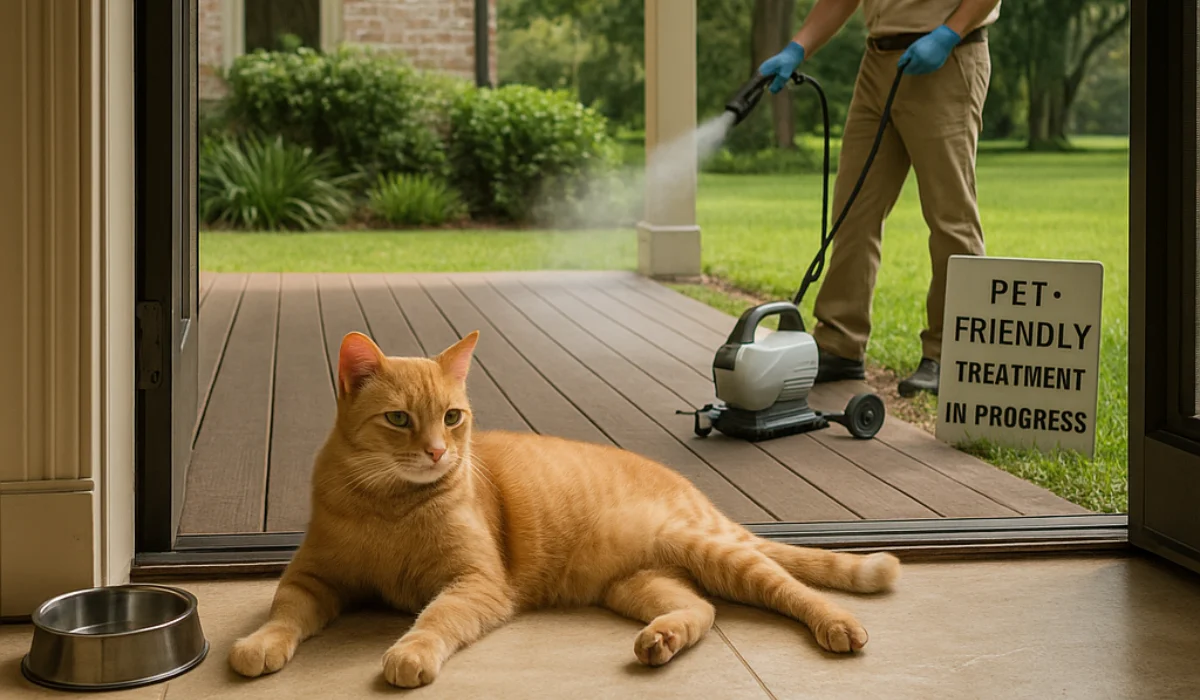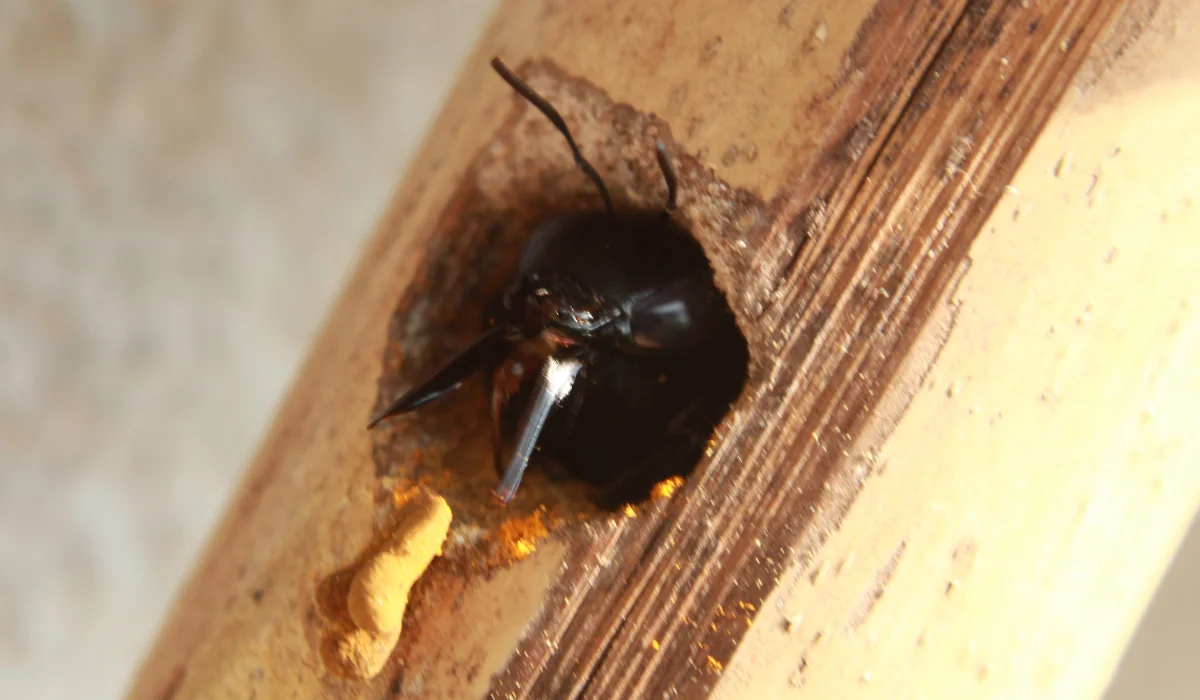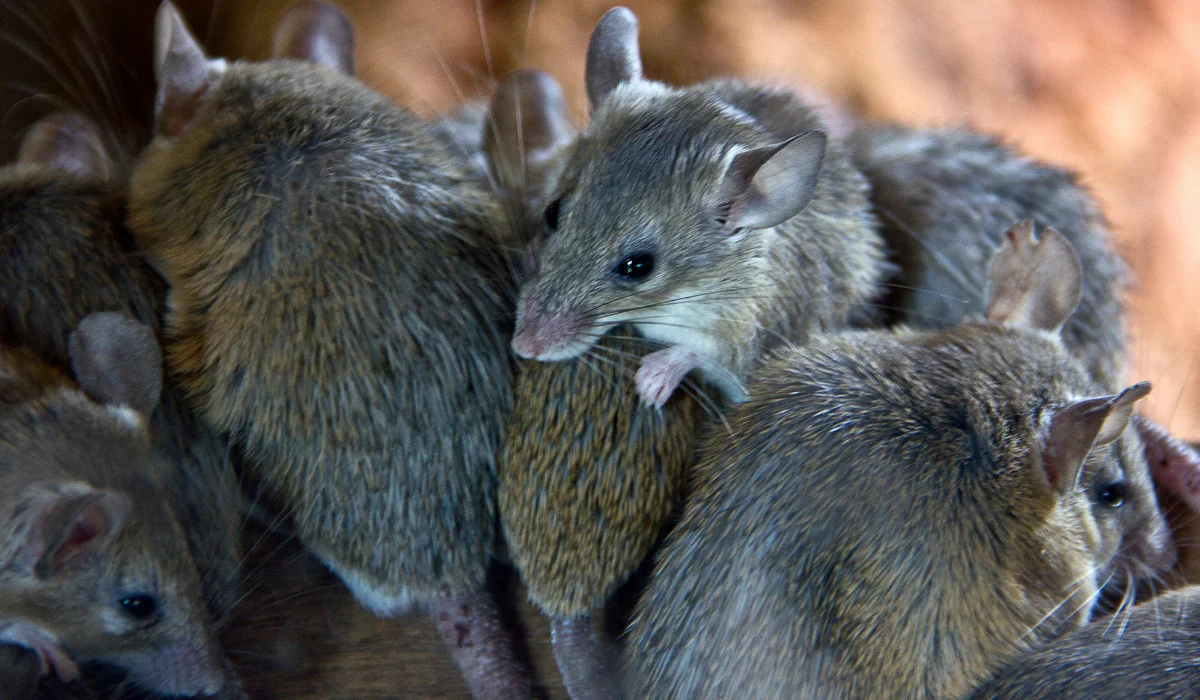Carpet beetle larvae are one of those pests that sneak into your home without much warning and then settle into all the wrong places. They’re quiet, fuzzy, and destructive, especially in a place like Southern Louisiana.
If you’re spotting strange holes in your clothes or worn patches on your rug, it might be more than just wear and tear.
Let’s look at what carpet beetle larvae look like, how to tell if you’re facing a carpet beetle infestation, and what steps you can take to get rid of them for good.
Key Takeaways
• Carpet beetle larvae are small, dark, bristly insects that leave shed skins and often hide in crevices.
• Damage to natural fibers, sightings of adult beetles, and hidden eggs are signs of a growing infestation.
• Cleaning with hot water, vacuuming deeply, and using boric acid may help stop larvae from spreading in your home.
• Professional pest control and sealing gaps are the best ways to break the life cycle and prevent return.
Identifying Features of Carpet Beetle Larvae
To know for sure what you’re dealing with, you need to recognize the signs. Carpet beetle larvae have some pretty distinct features.
Here’s what to look for:
Size and Shape
Carpet beetle larvae are small but not microscopic.
They usually range from 1/8 to 1/4 inch in length. These pests have an oval-shaped body that tapers toward the end, making them easy to distinguish from other larval pests like clothes moths.
Color and Texture
Most carpet beetle larvae are dark brown or reddish-brown, depending on the beetle species. You’ll notice the bristles first. Those coarse hairs are what give them a fuzzy appearance.
Some larvae even have alternating light brown and dark bands, especially the varied carpet beetle larvae, which are common in our area.
Bristles and Movement
The bristles on these larval bodies are more than just for looks. They help larvae burrow deep into upholstery and other fabrics, and for some people, they can cause mild skin irritation.
If you’ve got sensitive skin and start itching after sitting on the couch, this might be your culprit.
Shed Skins and Molting
As carpet beetle larvae grow, they molt multiple times, leaving behind shed skins that often resemble the larval form.
These skins accumulate in hidden spots like the underside of rugs, deep crevices in upholstered furniture, or along baseboards.
How to Make Sure It’s Carpet Beetle Larvae
Not sure if you’re dealing with carpet beetles? Before you jump to conclusions, here’s how to check.
Look for Physical Evidence
The first thing you’ll notice might not be the larvae themselves. It could be the damage. Carpet beetles feed on animal products, and that includes everything from wool sweaters to taxidermy.
If you’ve got infested items with patchy, uneven holes, it’s time to investigate.
Monitor for Adult Carpet Beetles
Adult carpet beetles are a sign that the larvae are nearby. Adults are oval-shaped and can be black (black carpet beetle) or multicolored, like the varied carpet beetle. They often show up on windowsills since they’re attracted to light.
If you’re seeing beetles around open windows, that means females are likely coming in to lay eggs.
Check Hidden Spaces
Carpet beetle eggs are tiny, but their placement is often a clue. Female beetles lay eggs in quiet areas where the larvae feed easily once the eggs hatch.
This includes folds of blankets, beneath furniture cushions, and even the creases of clothing stored in closets.
Compare Damage Types
Unlike bed bugs, carpet beetles don’t bite humans.
Instead, larvae feed on fabrics and fibers. Bed bugs leave behind blood spots and skin welts, but carpet beetles leave irregular holes.
What to Do if You Have Carpet Beetle Larvae
Once you know carpet beetle larvae are in your home, you’ve got to act fast and smart. Here’s what to do right now to get ahead of the infestation:
Vacuum and Deep Clean
Start with aggressive vacuuming in every corner. Pay special attention to baseboards, air vents, closets, and cracks in hardwood.
This helps remove larvae, shed skins, and even carpet beetle eggs before they become another generation of pests.
Wash or Discard Infested Items
For washable fabrics, run everything through hot water to kill larvae and pupae. Use high heat in the dryer, too.
Items that can’t be washed—like fur, hides, or delicate wools—may need to be dry cleaned or tossed entirely, depending on how bad the infestation is.
Use Boric Acid or Other Treatments Carefully
Some folks turn to boric acid for managing larvae in hard-to-reach areas like wall voids or behind appliances. It’s a low-toxicity option but should be used carefully around pets and kids.
Always follow safety instructions when applying any repellent or powder.
Reduce Attractants and Food Sources
Minimize natural fibers lying around. Vacuum pet hair often, especially around furniture, carpet beetles like to hide under.
Store wool clothes in sealed containers, and keep your home clear of dead insects, lint, and other organic debris that larvae feed on.
Block Re-Entry and Control Adult Beetles
Sealing up your home’s cracks and gaps is essential for pest management.
Use fine mesh screens on windows and vents. Keep doors shut tight, especially during spring when adult beetles are most active.
If you’ve got adult carpet beetles indoors, getting rid of them quickly helps break the life cycle.
Call In Professional Pest Control
If the infestation is beyond DIY, LaJaunie’s Pest Control is just a phone call away.
Our pest control experts use localized treatments that reach larvae in deep crevices and fabric layers, and our approach is safe for your family and pets.
We tailor our beetle treatments to your specific setup, whether it’s a historic home in Thibodaux or a cozy apartment in Baton Rouge.
Reach out today and let us help you get rid of carpet beetles and protect your space from the next wave.
 By: LaJaunie's Pest Control
By: LaJaunie's Pest Control 



